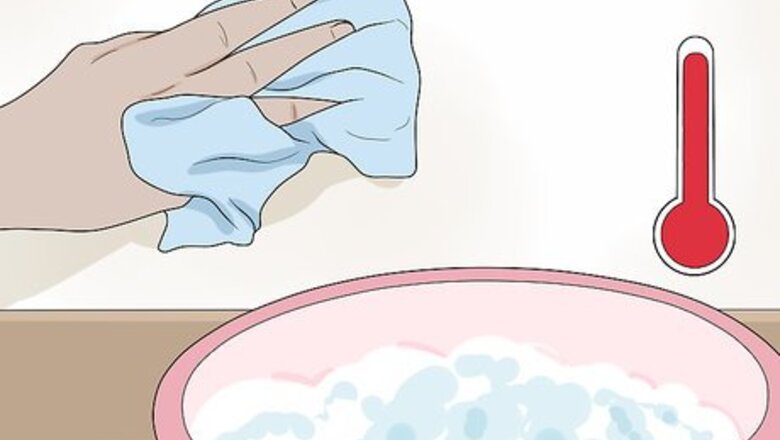
views
Using Sandpaper for Drywall
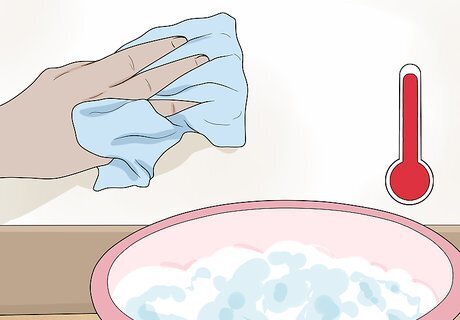
Clean the wall with soap and hot water. To prepare the wall for sanding, first fill a bucket with hot water and soap. Then, soak a cloth in the water and wash off the wall. This will remove any dirt or markings that the paint has accumulated, simplifying the rest of the job.
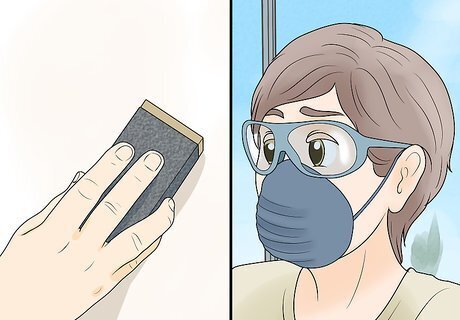
Purchase a sanding block or sander to use. Unfortunately rubbing sandpaper against the wall won't work very well. Instead you will need to invest in a sanding block or a sander. A sanding block is a small block of material that you can wrap sandpaper around, making it easier to sand flat surfaces. A sander is a automated tool like a drill that you load sandpaper into and it sands the surface for you. To use a sanding block, wrap the sandpaper around one side of the block and grip it with your hand from the other side. Sanders can differ in how you load them with the sandpaper, but generally they have a slot that you can load the sandpaper into before turning it on. If you haven't used a sander before, a sanding block is a safer option. A coarser grit on the sandpaper is acceptable because you're aiming to strip the unwanted paint. Use 80-grit sandpaper if you're looking to remove globs of paint. Sanding a wall will cause a risk of inhaling toxic dust, so wear a mask before beginning.

Sand away the unwanted paint. Rub the coarse side of the sandpaper against the paint. Move the sanding block or sander back and forth in 1 square foot (0.09 square meter) sections. Apply lots of pressure to the wall if you are using a sanding block. Sand the unwanted paint until the entirety of the paint becomes dull. Then, wipe away the dust.
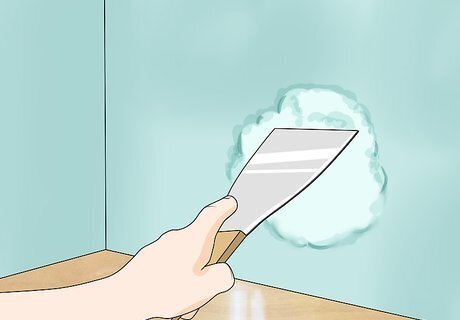
Strip the paint if you want to remove it entirely. If you prefer to remove the paint entirely as opposed to painting over it, use a paint scraper to peel off the remaining unwanted paint. Place the paint scraper's blade at the bottom of the unwanted paint, apply pressure to the blade, and slide it under the unwanted paint, peeling the paint off. The sanding process will have weakened the paint, making it easier to strip.
Trying Chemical Paint Stripper for Plaster Walls

Buy chemically-resistant gloves and ventilate the room. Chemical paint strippers eat away at the chemical structure of paint, so they are naturally caustic. Before beginning this process, make sure you've purchased chemically-resistant gloves to use. Additionally, wear old clothing that you don't mind getting damaged. Open several windows. Keeping the room you're in well ventilated is key as paint strippers can build up toxic fumes if there's a lack of fresh air.
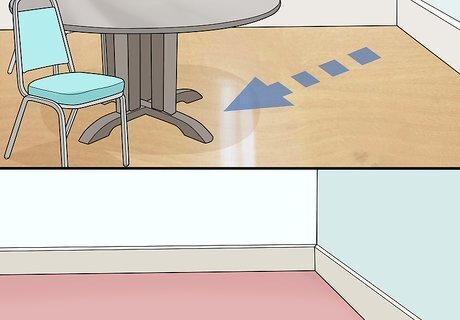
Remove all furniture and cover the floor. Chemical paint strippers won't discriminate what they eat through, so make sure the room is clear of all precious items. Move all furniture to a different room while you're removing the paint. To keep your floor safe you'll need to buy several materials from your nearest DIY store. You will need one large sheet of plastic and another large sheet of either kraft or rosin paper. Lay a sheet of plastic from the base of the wall across the floor. Then, layer a sheet of kraft or rosin paper on top of it. If any of the paint stripper lands on the floor, this layer will protect your floor from damage.
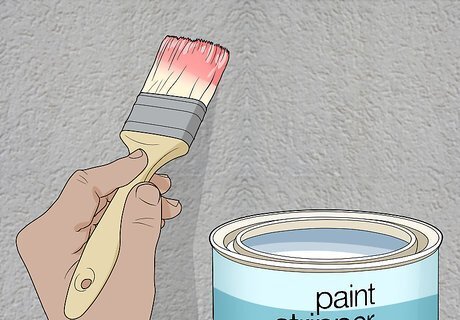
Layer the wall with a thorough coating of the paint stripper. Paint stripper is best applied with a wide paintbrush. If you don't have one, make sure you buy one before beginning. Dip the paintbrush into the paint stripper, then layer it over the entirety of the wall. Put on a coating roughly ⁄8 inch (0.32 cm) thick so that it won't dry too quickly. The coating thickness doesn't need to be too precise, you can mostly gauge the thickness by eye. If you're working on a vertical surface, use a paint stripper that is closer to a paste in texture so that it won't drip onto you.

Wait for the stripper to take effect. The chemical process may take minutes or hours depending on the stripper you're using. Read the product's instructions and wait as directed for the most efficient use of your time.

Scrape the paint off once you see bubbles. The paint on the wall should have started to bubble once you've waited for the directed amount of time. Once bubbling, take a paint scraper (if you don't have one, a putty knife or a spatula would work as well) and scrape off all the paint. It should come off in long peels. Try to get as much paint off the wall as possible. To use a paint scraper, place the blade at the bottom of the paint you wish to remove, apply pressure so the blade slides under the paint, then peel the paint off as you slide the paint scraper upwards. If there are any awkward spots, try using toothpicks or toothbrushes you don't plan on using again to scrape off the paint. If there is an underlying layer of paint that is still solid, you will need to apply another layer of chemical paint stripper to remove that layer separately.
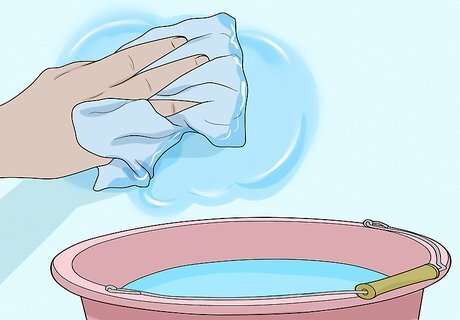
Follow the paint stripper instructions to neutralize the wall once you're finished. If you plan to repaint the walls, the paint stripper you've just used will cause your new layer of paint to fail. The method used to neutralize a paint stripper is different for each product, but usually, it's either a water wash, a mineral spirit, or a specialized product. For example, a neutralizer may ask you to mix 1 gallon (3.8 L) with 4 fluid ounces (120 mL) of neutralizer. Then, use this mixture with a cloth to wash the wall. Check your stripper instructions and apply however directed.
Employing a Heat Gun for Wooden Walls
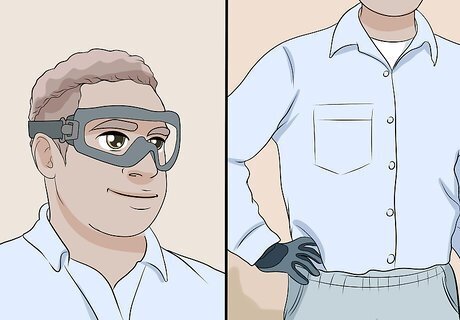
Purchase protective eyeglasses, a long-sleeved shirt and thick gloves. You will be dealing with a high heat appliance, so make sure to use protective eyeglasses and use a thick long-sleeved shirt if you have one, as well as a thick pair of gloves to avoid burns. You will also need a paint scraper for this method.

Craft a heat shield if you only want to strip a specific spot. A heat gun is best suited for stripping full walls, but if there is a specific spot you wish to strip you'll need to use a heat shield. With a pair of scissors, cut out a cardboard ring slightly larger than your target area. Then, wrap the cardboard ring in aluminum foil. Place the shield over the spot and continue the process.

Use heat on the unwanted paint. In a wide sweeping motion, keeping the nozzle of the heat gun approximately 2 inches (5.1 cm) away from the surface, steadily apply heat to square sections of the wall. You can measure these sections using a tape measure. To start with, heat a 3 feet (0.91 m) section on the wall. You'll know you're ready for the next step when the paint visibly begins to loosen its hold on the surface beneath it. If you are using a heat shield, focus the nozzle on the single area for a shorter amount of time until you visibly see the paint begin to loosen.
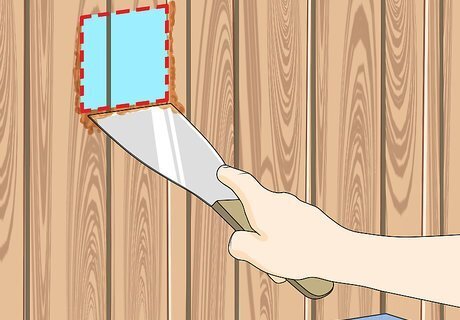
Scrape away all unwanted paint at the pre-heated section. With a paint scraper, scrape away all the loosened paint away from the section you heated earlier. Pierce the loose paint with the blade of the paint scraper, then scrape upwards as if you were shovelling snow to remove the paint.
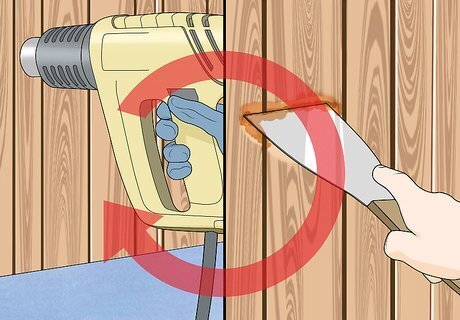
Repeat the process over the entire wall. Choose a new 3 feet (0.91 m) section on the wall, heat it up, then scrape the paint off. Keep repeating until you've removed the paint off the entire wall section by section.


















Comments
0 comment